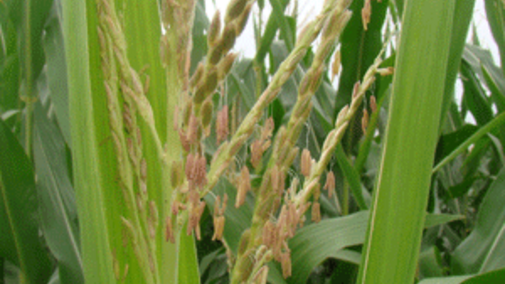Q: We farm in northeast Nebraska where we had heavy precipitation and wet conditions for several weeks, likely leading to leaching of previously applied nitrogen and delaying a nitrogen application to corn. Will adding N now via fertigation endanger pollination?
Also see
From the CW archive:
How Extended High Heat and Humidity Disrupt Corn Pollination
A: Tom Hoegemeyer, corn breeder and UNL adjunct professor of practice, responded: Pollination isn't a particularly fragile time in regard to applying water and nitrogen. Pollination mostly occurs between 8:30 a.m. and noon. When the temperature is 90°F to 95°F, the pollen is killed by heat and is seldom viable past 2 p.m. That leaves lots of time to run pivots, apply N, etc. when it won't harm pollination. Silks tend to be viable for three or four days at these temperatures, so if a plant isn't pollinated one day, generally the next day will work just fine. As a precaution, I would not run a pivot on pollinating corn from 6 a.m. to noon.
I'd recommend that nitrogen go on as soon as practical. Corn nitrogen use is very high during the pre-tassel growth phase and again at kernel growth, from one to three weeks post pollination. About seven to ten days post pollination (before brown silk) lower N will start causing kernel abortion and serious yield loss in corn.
Extension Educator Chuck Burr added: Generally, the UNL recommendation would be to use 30 lb of N with 0.25 inch of water or 50-60 lb N with 0.50 inch of water.

